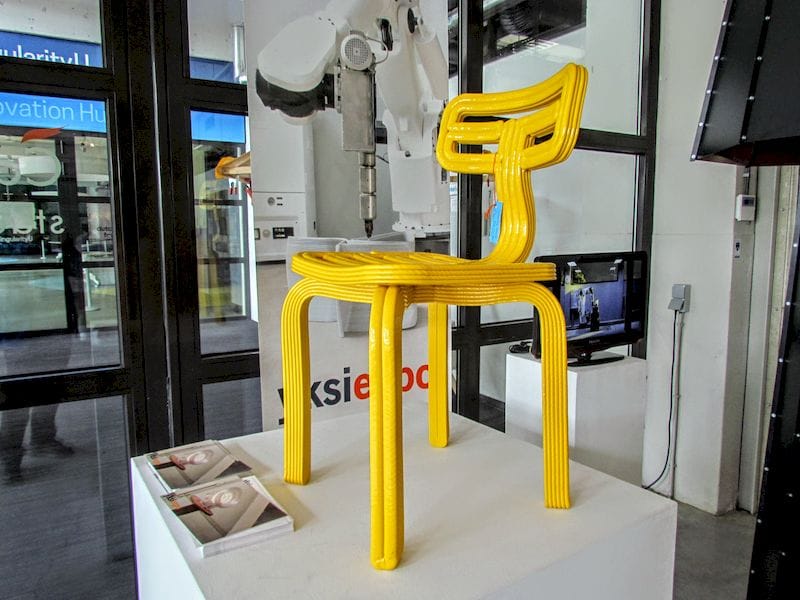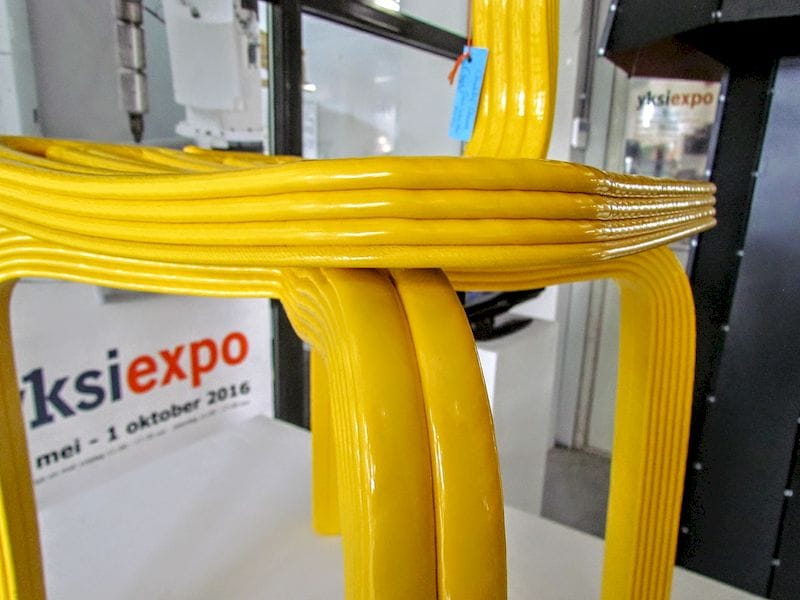
This week’s selection is the stackable Chubby Chair by Dirk Vander Kooij.
This is not a new item; it’s been in existence for some years, but is still an excellent example of how you can produce functional and aesthetically pleasing furniture using 3D printing.
Vander Kooij used a robotic approach to extruding this item. You can see in this image the rather coarse extrusion layers present. While they are quite large, they do not detract from the design and more than likely provide additional strength with the fat extrusions.

What 3D printer was this made on? It wasn’t. It was produced using a robotic system with customized software to drive it. Vander Kooij explains:
The chair gets its ultimate shape by bending the legs and seat in the right direction, this in contrast of traditional 3D printing. It is like the in-house developed extruder, mounted on a robotic arm, squeezes out a tube of paint.
You might be wondering how this particular shape was formed using extrusion, as there are some very significant overhangs in the geometry. Vander Kooij did not use support material, at least in the conventional way. This video shows the concept of how the extrusion was performed:
What this particular item shows me is that design can trump the capabilities of the 3D printer used. Often people may assume that “higher resolution is better”, and that might be the case if the application requires it. But does each and every application require high resolution?
Consider the function of the object and then consider whether high resolution is actually required. I think you’ll find in many cases you actually do not.

